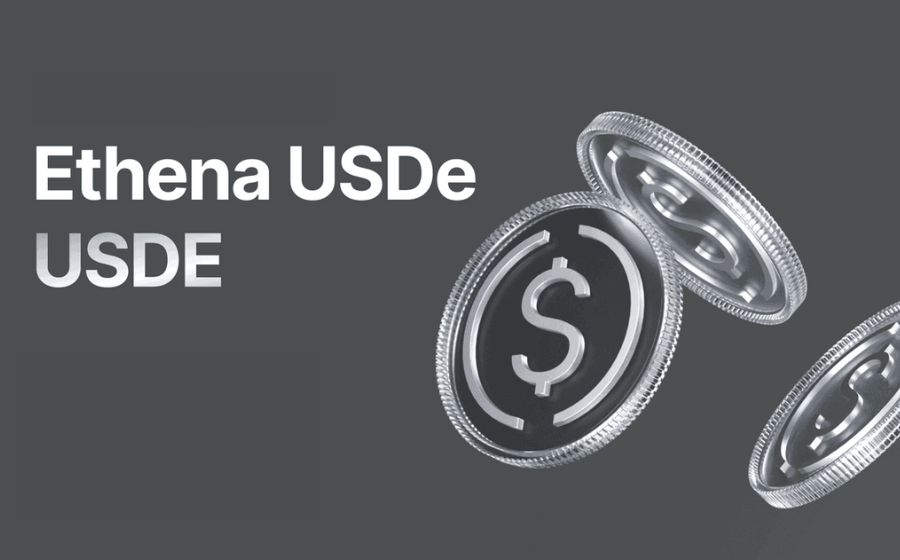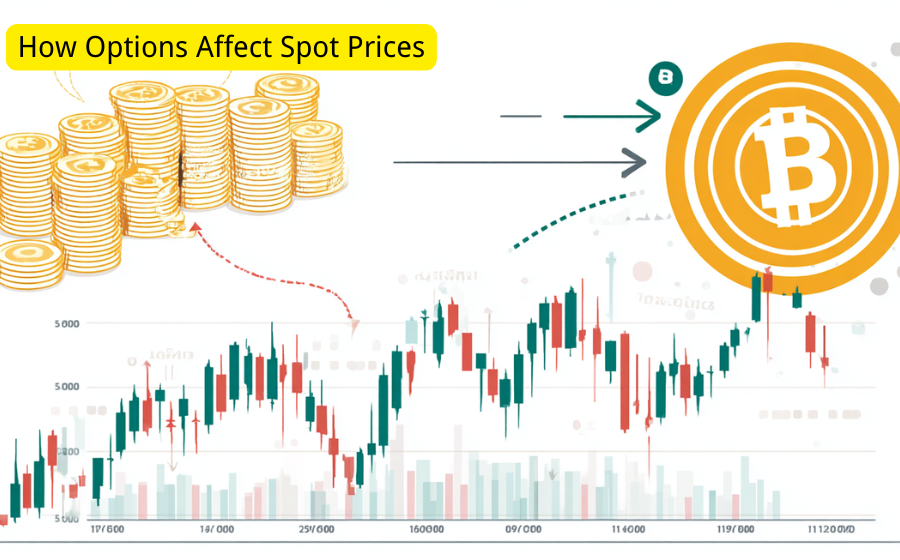
KEYTAKEAWAYS
- A sudden oracle failure on Binance caused USDe to crash to $0.65, exposing major flaws in CeFi and DeFi system design.
- USDe’s depeg revealed the dangers of centralized pricing, liquidity isolation, and weak liquidation controls within Binance’s unified account model.
- The flash crash showed that technical design and trust are tightly linked—without reform, “stability” in crypto remains an illusion.

- KEY TAKEAWAYS
- I. BACKGROUND: A TIGHTROPE “SYNTHETIC DOLLAR”
- II. THE DAWN CRACK: ORACLE ISLAND EFFECT
- III. UNIFIED ACCOUNT CASCADE: FROM BIAS TO LIQUIDATION STORM
- IV. LIQUIDITY GAPS: THE HIDDEN WALL BETWEEN CeFi AND DeFi
- V. MIRROR IN A MIRROR: LESSONS FROM THE TECHNICAL GHOST
- DISCLAIMER
- WRITER’S INTRO
CONTENT

The crypto market woke like a startled beast. It was a normal late Friday night. Just past midnight in Beijing, people were still scrolling on their phones. Bitcoin held around $100,000. Small-cap tokens drifted in DeFi pools.
Suddenly, a crack showed on Binance’s order book. USDe—the synthetic dollar stablecoin from Ethena—fell from $1 to $0.65. In only 30 minutes, redemptions hit $1 billion. Liquidations of $600 million fell like dominoes, hitting 1.6 million traders. About $19 billion in market value vanished. SUI plunged 87%. Long ETH positions lost $235 million.
This was not a macro wave. It was a set of small but sharp technical faults: a bad price oracle, a liquidity gap, and a trap in a liquidation system.
To be honest, this “depeg” felt oddly isolated from the wider market.
I. BACKGROUND: A TIGHTROPE “SYNTHETIC DOLLAR”
USDe had shown strength in past volatility. It is Ethena’s flagship product. It uses ETH and BTC derivatives as collateral and delta hedging to hold the $1 peg.
This is not like USDT with cash reserves, or USDC with bank custody. USDe is more like high-tech tightrope walking. In DeFi, through pools like Curve, it keeps deep liquidity in the tens of billions. The price swing had never been over 0.3%.
But on Binance, a CeFi giant, things changed. The candle from $1 to $0.65 was a loud slap to the whole industry.
Ethena founder Guy Young wrote on X: “This is not USDe depegging; this is Binance depegging.”
II. THE DAWN CRACK: ORACLE ISLAND EFFECT
Picture 5:44 a.m. The Binance servers hum.
The market already shook a bit on rumors that Trump would set a 100% tariff on China. Levered positions loosened. Then a $90 million USDe sell order hit the book.
$90 million is not big versus the $3+ billion USDe supply. But in Binance’s “small world,” it became the center of a storm.
The reason: oracle design.
Binance priced from its own order book. It did not use a multi-source oracle like Chainlink. An oracle is the “eyes” of a stablecoin. It brings in outside prices to value collateral.
In DeFi, Ethena’s USDe uses TWAP. It reads from Uniswap, Curve, and other pools. In some cases it treats USDe as 1:1 with USDT or USDC.
Binance chose “self-reliance.” It used only its own price.
This works when calm. In high volatility, it acts like a magnifier. It turns a small gap into a big one.
After the sell order, Binance’s USDe depth was thin. Binance had only 5% of global USDe volume. The price slipped 35% in a flash. The oracle took that “fact” and fed it to the Unified Account system. The plot turned there.
III. UNIFIED ACCOUNT CASCADE: FROM BIAS TO LIQUIDATION STORM
Binance’s Unified Account is convenient. You can pool assets like USDe, wBETH, and BNSOL. You can use them for margin and up to 10x leverage.
But when the oracle marked USDe down, the whole pool got revalued. Accounts heavy in USDe fell below the maintenance margin line (110%). Forced liquidations started.
It was not a few accounts. It was a chain reaction.
From $50 million to $1 billion of USDe got redeemed by bots and pushed on-chain. But Binance froze withdrawals, so arbitrageurs could not move fast to refill liquidity.
This was not a coincidence. It was a clash of two designs.
-
DeFi liquidations: slower and softer. Aave uses a health factor. Ethena’s redemption checks delta-neutral status, not an external price.
-
Binance liquidations: instant thresholds, no delay checks, no multi-source confirm.
Dragonfly investor Haseeb Qureshi wrote on X: “It is like a fire inside Binance, but all roads are blocked. Firefighters cannot enter. The fire burns hot inside. Outside you only see smoke.”
The facts support this.
-
On Bybit, USDe only dipped to $0.95.
-
On Curve, the gap was only 0.3%.
These venues link to Ethena’s primary dealer system. Market makers can mint/redeem on-chain and arb within the venue.
Binance lacked this link. Its API also failed. Withdrawals paused for hours. Arbitrage that should take seconds took half an hour. The gap spread like a virus.
IV. LIQUIDITY GAPS: THE HIDDEN WALL BETWEEN CeFi AND DeFi
The fuel for this chain was a liquidity gap—a hidden wall between CeFi and DeFi.
USDe’s peg relies on market efficiency. If price moves 1%, market makers arb across venues.
On Curve’s USDe–USDC pool, a TWAP smooths slippage. Ethena’s basis trade stabilizes collateral. Redemptions are fast.
But Binance’s book was an island.
Depth was only $50 million. Net sell flow was $61,000 per second. Bids vanished.
Do a quick calc:
Bias δ = 0.35, delay t = 1,800 seconds, depth L = $50 million. The chain effect ≈ δ × L / t. A small ratio, yet enough to blow up $1.9 billion in value.
It may not have been pure tech failure.
On-chain data showed this: at the same time, an Arbitrum wallet sent $110 million USDC to Hyperliquid and opened $110 million of BTC/ETH shorts. It was one minute before the tariff news.
After the sell, those shorts made $192 million.
On October 6, Binance said it would fix the oracle. The change would go live on October 14. That left an 8-day “window.” Was this chance, or a trap?
X was full of theories. Some said Binance used the event to “tax” regular users, push BNB back up, then paid $283 million in user compensation to look friendly.
But the real lesson is deeper.
It shows CeFi’s central risk. One platform’s price is like a royal decree. A small bias can shake the “democratic” market design of DeFi.
V. MIRROR IN A MIRROR: LESSONS FROM THE TECHNICAL GHOST
We have seen this before.
In 2023, USDC dropped to $0.87 when SVB failed. That was a true reserve crisis.
This time was different for USDe. Its on-chain Proof of Reserves (PoR) showed collateral stayed strong, even grew. The Ethena protocol held.
Guy Young gave suggestions:
-
Oracles should add real-time PoR, checked by firms like Chaos Labs.
-
Liquidations should add a flash-crash filter and reference major venue prices.
Binance said it would:
-
Switch to an external oracle on October 14,
-
Add a price floor.
But this only treats the symptom. The core question is: what is “stable”?
In a mixed world of CeFi and DeFi, speed and resilience should work together. A tech island breaks that link.
This flash crash is a mirror. It shows a fork in DeFi’s road.
Ethena’s delta-hedging proves a synthetic stablecoin can hold in stress. It also reminds us:
Technology is not only code. It lives inside networks of power and trust.
Binance’s payout was kind. But problems remain:
-
Unified Account lacks position isolation. Risk spreads fast.
-
Oracles lack ZK-proof checks. That is a single point of failure.
In the future, instant PoR and bridges (like LayerZero) may help.
More important is a change in mindset. We are not building a dead protocol. We are building a living ecosystem.















